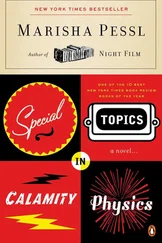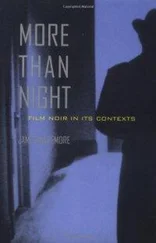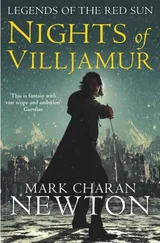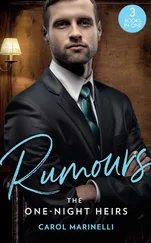Checking the dates, I saw Rachel Dempsey would have been twenty-seven in the spring of 1993, the year Peg Martin attended the picnic. Theo would have been only sixteen, an eleven-year age difference.
It was close enough. So Rachel and Theo had seemingly been together. But what, exactly, had Rachel Dempsey planned for her hunting expedition in Nepal — to vanish off the face of the Earth? Disappear without a trace so she might resurface somewhere on that island in order to— what ? Reunite in paradise with her lover, Theo? What was on that island?
The houses there had a singular style of architecture. Called palafitos, they were modest cottages built atop rickety stilts and painted vibrant pinks, blues, and reds, so they resembled long-legged water bugs swarming the coastline, which was not a tropical paradise, but thorny and gray, with sharp rocks and dark water that seeped across the beach.
I’d seen those stilt houses before.
It was when I’d been inside Wait for Me Here, in the Reinhart family greenhouse, in Popcorn’s work shed. I’d noticed a postcard tacked to a bulletin board — those very same stilt houses pictured on the front of it. Thankfully I’d the prescience to take it down and read the back, where someone had scribbled four words.
Someday soon you’ll come.
There was more: The churches on Chiloé looked like no others in the world, a combination of European Jesuit culture and the native traditions of the indigenous people on the island. They were austere, covered in wooden tiles like flaking dragon scales and jutting steeples topped with a spindly cross. Like the palafitos, they, too, were painted wild colors, though this brightness evoked not jubilation, but the sinister cheer of a clown’s face.
I’d seen one somewhere before. I raced back over to the floor, trawling the papers until I found it.
In the Vanity Fair article, Ashley’s freshman-year roommate had mentioned, when Ashley abruptly moved out with no word, all she’d left were three Polaroids, which had slipped, forgotten, behind her dresser. The snapshots had been included in the article — artifacts of Ashley’s lost existence, portholes into her world. I’d barely glanced at them.
Now, staring down at the first one, I felt light-headed with shock.
It featured a small, morose-looking church. It wasn’t an exact match, but it had the same architecture as all the others on the island.
The second Polaroid featured a massive black boulder on a beach, seagulls circling overhead. The boulder had a mystical hole through the center, as if God had punched his thumb through it, making an impish void in the world. I didn’t recognize it.
But the third featured a flock of black-necked swans, one of them carrying a cygnet on its back. Black-necked swans, I read on Wikipedia, were prevalent in South America. Yet they bred and hatched their young only in a few specific areas, one of which was Chile’s Zona Sur, which included Chiloé.
Ashley could very well have been on the island. It seemed to have been where she’d taken the Polaroids.
I opened up Google Earth, staring at a satellite view. Parts of the main island, Isla Grande, and almost all of the smaller islands around it freckling the blue sea were concealed by silvered clouds.
Had all this evidence been silently leading me there ?
Gallo had been so adamant about keeping me down in the real world, ordinary life, making sure that I didn’t keep chasing Cordova — into what?
Warning voices echoed resoundingly through my head, one of the loudest of which was that old grizzled alcoholic reporter back at the bar in Nairobi. Slumped over his drink, wearing his stained khaki jacket and fatigues, he’d warned me about the fates of the three reporters who’d worked the cursed case, the case without an end, the tapeworm.
One had gone mad. Another quit the story and a week later, hanged himself in a Mombasa hotel room. The third simply disappeared into thin air, leaving his family and a prime post at an Italian newspaper.
“It’s infected,” the man had mumbled. “ The story. Some are, you know.”
I sat back thoughtfully in my desk chair. Septimus, I saw with disbelief, had chosen to fly as I’d never seen him do before. He was crashing drunkenly into the ceiling and windows, the Le Samouraï poster, his wings fluttering against the glass in excitement — or was it alarm at what I was about to do, where I was about to go?
Because I noticed now, the fates of those three reporters were not unlike the actors who’d worked alongside Cordova, those who, once they left The Peak, never returned to ordinary lives, but scattered to the outer reaches of the world, most never heard from again, becoming unfathomable and unseen, beyond reach.
It was happening to me now.
Wasn’t it? I was following in their footsteps, sending myself to the outer reaches of the world. Was I fleeing something or had I been set free?
I wouldn’t know until I saw what was there, if anything at all.
Four days later, I took a flight to Santiago, Chile, and another to Puerto Montt.
I strode through El Tepual airport to the baggage claim, brimming with children, families embracing, signs for INFORMACION and Eurocar. I found my army duffel sitting alone on the revolving carousel, as if it’d been awaiting me for months.
I took a taxi to the bus station and boarded the first one to Pargua. It was packed, half the seats occupied by rowdy boys in white kneesocks, some madrigal singing group manned by a sweaty-faced director who looked ready to quit. An old woman took the seat beside me, giving me a wary look, but once she dozed off, her head bobbed gently against my shoulder like a buoy in choppy seas. Our bus, an old yellowed beast with dirty rainbows emblazoned up its sides, slung and bumped its way through the streets, past Bavarian A-frame chalets and busy cafés out into the countryside.
The ferry to Chiloé Island left every twenty minutes. It cost a dollar. As we took off across the wind-chopped sea, I was surrounded by a large and boisterous group of tourists crowding the top deck. An Italian woman was trying to keep her thrashing hair out of her face as her boyfriend took a picture. He noticed me and motioned with a grin if I’d take one of them together. As I obliged, I couldn’t help but wonder if someday someone might track them down and show them my photo as I’d showed Ashley’s.
Do you recognize him? Did he speak to you? What was he wearing? What was his demeanor? Did he strike you as strange?
Standing along the railing, staring out, I could see the island far ahead. It was revealing itself like a woman stepping out from behind a curtain, unhurried and deliberate: deep-green rolling hills, white mist streaking the shoreline, soft lights twinkling through the vegetation, telephone poles with tangled wires, a homely beach. For a minute, a large black-and-white bird, some type of stormy petrel, flew alongside the ferry, very close to where I stood, diving up and down, calling out in one shattering screech before veering away on a new gust of wind, swallowed by the sky.
We unloaded in Chacao, a frazzled village with the neglected countenance of a place people were constantly leaving. There, with many of the same people from the ferry, I boarded another bus to Castro, the largest town on the island, where I checked into the hotel, the Unicornio Azul. It was hard to miss: bright pink building on a wet gray street. I’d read it was lively, popular with locals and tourists traveling cheap, known for good food and English conversation. My room had faded blue wallpaper, a cot only slightly larger than the massive Santiago telephone book provided on the bedside table. I took a shower standing beside the toilet (the bathroom the size of a telephone booth), and then, clean-shaven, went downstairs to find the dining room. I ordered a pisco sour, what the waitress explained was the local drink, and when she lingered, asking if I was Australian, I took out the Vanity Fair article and inquired if, by some small chance, she recognized the landmarks in the pictures.
Читать дальше












